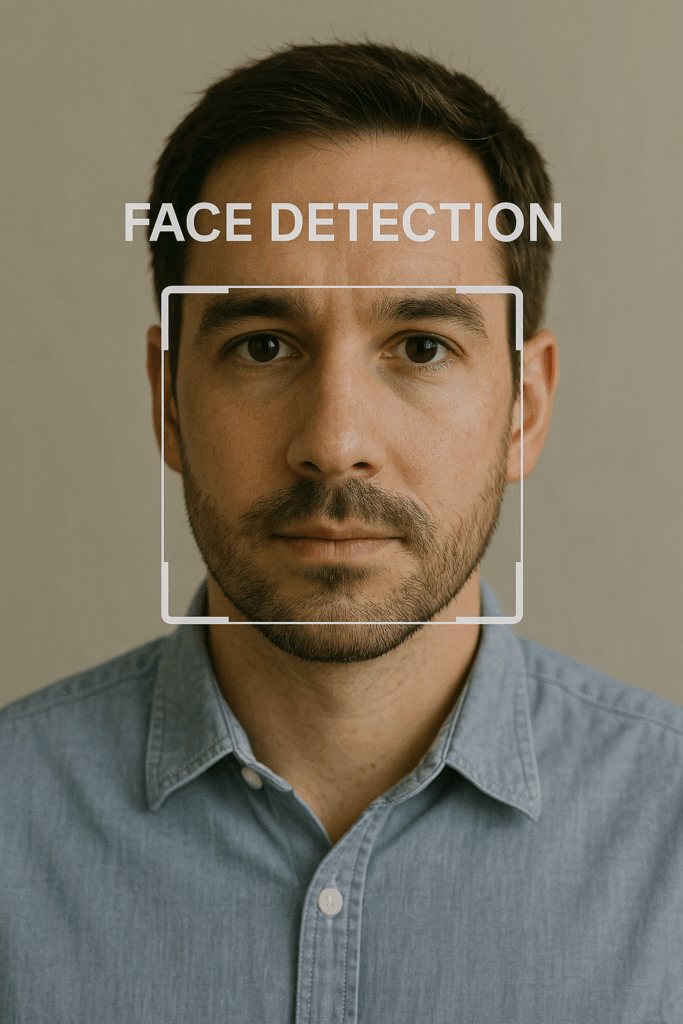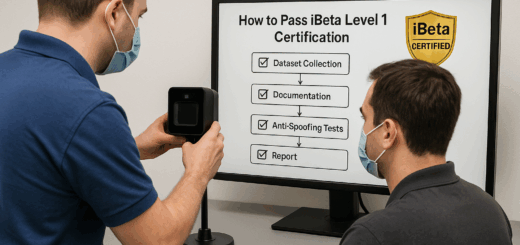What Is iBeta Level 1 Dataset?
The iBeta Level 1 dataset is the foundational dataset used during iBeta’s Level 1 Presentation Attack Detection (PAD) testing.
It is designed to measure how well a biometric system — such as facial recognition, fingerprint scanning, or iris authentication — can detect and block basic spoofing attempts while still correctly recognizing genuine users.
This dataset is built under strict guidelines to ensure fairness, repeatability, and compliance with the international ISO/IEC 30107-3 standard for biometric liveness detection.

1. Purpose of the iBeta Level 1 Dataset
The Level 1 dataset is intended to:
- Simulate everyday spoofing attacks that a casual fraudster might attempt.
- Validate baseline liveness detection in biometric systems.
- Establish certification credibility, proving that solutions can withstand the most common attacks.
- Serve as the first step before more advanced Level 2 testing.
2. Composition of the Level 1 Dataset
The dataset consists of two main groups:
- Genuine Biometric Samples
- Collected from real human subjects under lab supervision.
- Used to test if the system correctly accepts valid users.
- Collected from real human subjects under lab supervision.
- Spoof (Attack) Samples
- Created using low-cost, simple methods.
- Must be produced with materials costing no more than USD 30.
- Examples include:
- Printed photographs
- Displayed videos on a smartphone or tablet
- Paper masks
- Basic 2D cutouts
- Printed photographs
- Created using low-cost, simple methods.
3. Testing Parameters
The iBeta Level 1 dataset is applied under strict rules:
- Number of Attempts:
- 150 spoof presentations
- 50 genuine presentations
- Timeframe:
- Spoof creation and testing must be performed within 8 hours.
- Spoof creation and testing must be performed within 8 hours.
- Pass/Fail Standard:
- 0% spoof acceptance rate is allowed (no spoof can pass).
- Genuine acceptance must remain high to avoid usability issues.
4. How the Dataset Challenges Biometric Systems
The Level 1 dataset focuses on basic fraud attempts, forcing the system to demonstrate:
- Flatness Detection: Distinguishing a 2D photo from a 3D human face.
- Replay Resistance: Identifying screen glare, pixelation, or motion artifacts from video replays.
- Basic Texture Analysis: Spotting differences between paper/ink and real skin.
- Low-Effort Attack Resistance: Withstanding simple attacks that require minimal skill or resources.

5. Use Cases of Level 1 Dataset
- Baseline Certification: Every biometric vendor must pass Level 1 before attempting Level 2.
- Mobile Authentication: Ensures face or fingerprint unlock resists printed photos.
- Banking & Payments: Validates security for mobile apps and ATMs.
- Healthcare Systems: Prevents fraud in EPCS and patient authentication.
6. Benefits of Passing Level 1 Testing
- Market Credibility: Demonstrates resistance to the most common spoofing threats.
- Compliance Alignment: Meets ISO/IEC 30107-3 and FIDO biometric standards.
- Customer Trust: Shows users that even basic fraud attempts won’t succeed.
- Foundation for Level 2: Unlocks the ability to pursue advanced certification.
7. Quick Comparison: Level 1 vs Level 2 Dataset
| Aspect | Level 1 Dataset | Level 2 Dataset |
|---|---|---|
| Attack Complexity | Basic, low-effort spoofing | Advanced, high-effort spoofing |
| Cost Limit | ≤ USD 30 | ≤ USD 300 |
| Time Allowed | ≤ 8 hours | ≥ 48 hours |
| Examples | Printed photos, video replays, paper masks | 3D masks, silicone molds, prosthetics |
| Pass Standard | 0% spoof acceptance | Stricter tolerance, very low acceptance |
8. Related Topics
- iBeta Level 1 dataset
- biometric PAD Level 1
- ISO/IEC 30107-3 Level 1 testing
- Level 1 spoof detection dataset
- liveness detection baseline dataset
- iBeta certification Level 1
- presentation attack dataset Level 1
Conclusion
The iBeta Level 1 dataset is the cornerstone of biometric certification, designed to prove that systems can resist low-cost, simple spoofing attempts. Passing Level 1 is a mandatory milestone for biometric vendors, establishing both trustworthiness and compliance before tackling more advanced Level 2 challenges.
By ensuring resilience against the most common fraud techniques, the Level 1 dataset helps organizations deliver secure, user-friendly, and globally recognized biometric solutions.
FAQs
It includes simple presentation attacks like 2D printed images or low-quality spoofs.
It ensures biometric systems can resist the most common and easy-to-create spoofing methods.
Companies developing biometric solutions for consumer apps, banking, or mobile authentication often start with Level 1.
Level 1 focuses on basic spoofs, while higher levels use more advanced and complex attack methods.


